A stalk of butterfly weed pushed its fiery orange flowers out of a green stem in a West Tisbury field, an unusual sign of a season past.
Spring is springing in September. Lilac bushes and cherry trees are bursting with blossoms and the fresh green leaves of spring, while oak trees settle in for their long winter’s nap.
It seems, from our human perspective, that the hands on the seasonal clock have been spun too far and the spring has snapped. Has nature gone haywire?
Naturalists and ecologists, those who study these complex systems, know this is just not the case. They find order where none seems to exist, and the acknowledge the infinite number of variables in the great natural chain of unexpected events.
Why are some trees sprouting spring like leaves while others are still shedding their leaves and donning winter’s bare-boned apparel?
Where some see only destruction – fallen limbs and browned leaves – others see the benefits. The forest canopy is open to the sky. Light shines through to provide food for new plant growth, while fallen timbers supply homes for countless insects, as well as fuel for the winter fire.
Experts encourage people to observe and learn from these natural phenomena. Many of the unusual sightings are related to August’s hurricane, which stripped leaves from trees and left much of the landscape shriveled and brown.
“It’s all part of nature’s way,” says Gus Ben David, director of the Felix Neck Wildlife Sanctuary and the Island’s senior naturalist. “Hurricanes do not destroy anything in nature. They just alter it. A hurricane is only destructive to human possessions and dwellings.
“Hurricanes are part of the factors that determine what grows and why. They alter feeding patterns and insect cycles. It is advantageous to some and disadvantages to others. It actually revitalized things in many ways.”
Seaside goldenrod is flourishing along the shore. Most of the grasses, used to the wind and spray of salt, are fine.
Thomas Chase, ecologist for The Trustees of Reservations, explains the sharp difference between the plants bursting with leaves and those that appear dead, but are actually in hibernation.
“The oaks have pretty much gone into their winter dormancy,” said Mr. Chase. “They have withdrawn their summer’s energy into their roots.
“On the other hand the cherry trees and hickory have begun to rebud. In their judgment, there is enough of a growing season left to capture more energy before winter sets in.
“The slow-growing trees, like oak, realize that’s not worth their while. A lot of the non-native, ornamental and flowering trees are resprouting. They’re ones that you normally think of their leaves as fairly flimsy, tender, where it is easier to produce leaves. They can collect and store more energy.”
Some trees may be weakened, their ability to store energy sapped by the storm, Mr. Ben David said. They may show less growth next year, but even that difference may not be detectable to the human eye, he said.
“It’s important to note that it’s the drying effect that killed the leaves,” Mr. Ben David said, “not the salt, contrary to popular opinion. The wind sucked them dry, like putting a vacuum cleaner to a house plant. It took the moisture out and started winter prematurely. Most of the plants here are used to the salt.”
In response to the loss of leaves, some plants sent out new growth. Others did not. Regardless, the real winter will set in again.
William Wilcox, agricultural agent with the Dukes County Extensions Service, has received dozens of questions from farmers and growers about the effects of the storm on plants. He often refers folks to the specialists at the headquarters of the extension service at the University of Massachusetts.
“We’re definitely losing some of next year’s flowers,” he said, “because they’re blooming now.”
Those blooming now, for a second time this season will not bloom again in the spring, he speculated. The combination of the drought and defoliation have prompted some of the conditions reminiscent of April and May, instead of September, he said.
His one fear for the plants is that a sudden shift to winter, instead of a gradual slide into the cold, could harm the plants further.
The goldenrods and asters which normally cover the Island at this time of year are not completely absent, but their numbers are greatly diminished, noted Josephine Bruno, wildflower expert.
“They have obviously been salt-blasted,” Mr. Chase said. “The tops of the plants have been burnt, as they would be by fire, but they are resprouting new leaves. From an ecological perspective, they’re not wasting their energy on flowers. They’re putting it into leaves.
The storm sparked a great chain reaction, throwing a wrench into the infinite number of connections in nature. The storm has affected the Island’s vegetation, which affects the insect population, which in turn affects the Vineyard’s avian residents and visitors.
What will the warblers do that traditionally swing by the Island during their fall migration?
“That’s variable,” Mr. Ben David said. “My suspicion is that they could keep flying or they will pick different routes where the storm damage hasn’t been quite so severe,” Mr. Chase said, “probably more of the latter, especially these birds that are more flexible and don’t migrate by an inherited pattern.”
Mr. Ben David had just a single young osprey with a broken wing brought in to the Felix Neck barn. The young bird was hatched later and not yet fledged from its nest.
“That’s all a part of natural mortality,” Mr. Ben David said. “That is what we teach. It is a great complex system that is so beautiful to experience and see. It’s a dynamic system, and we need to appreciate and enjoy the dynamics of it. Things will start to build again, and it’s awesome to see, but we need to be careful about making conclusions.”
Insects that count on green leaves – grasshoppers, shield bugs and leaf hoppers – are suffering. Late-season nectar feeders – true bees, butterflies and moths - could be having trouble finding adequate supplies of nectar.
Meanwhile, the insects which count on the supply of dead leaves – detritus feeders such as ants – are thriving.
Some of the season’s strange botanical sightings cannot correctly be attributed to the storm, Mr. Chase said. He has noticed sheep’s laurel in the field at the Long Point Wildlife Refuge which normally blooms in June – but this can happen regardless of storm activity. It’s just one of those unexplicable occurrences.
"There are variables, tremendous varioubles," Mr. Ben David says. There are far greater threats to the natural world than equally natural forces, he said. While warbler populations struck by the hurricane during migration may decline, he said, their numbers will recover in time. And the most fit birds will survive.
"A far worse problem for warblers," he said, “is in the destruction of habitat and pollution of the environment.”

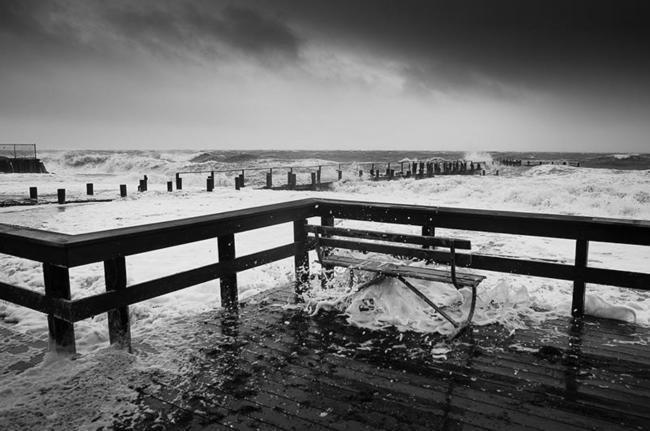



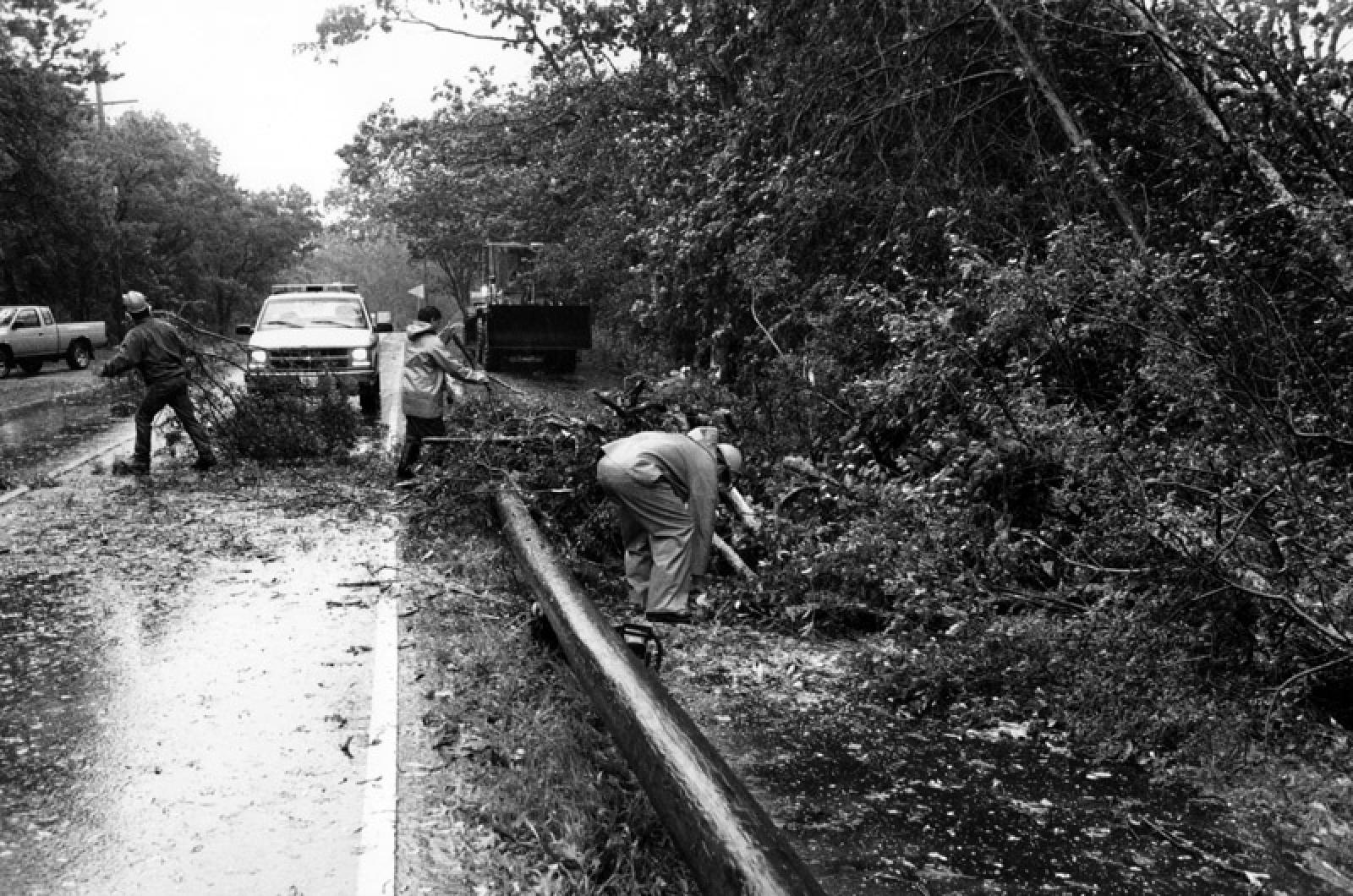

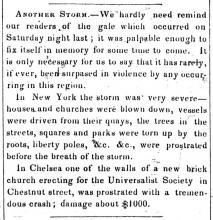
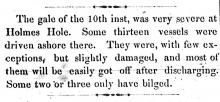

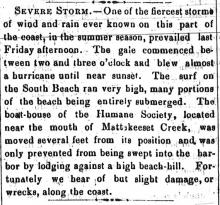
Comments